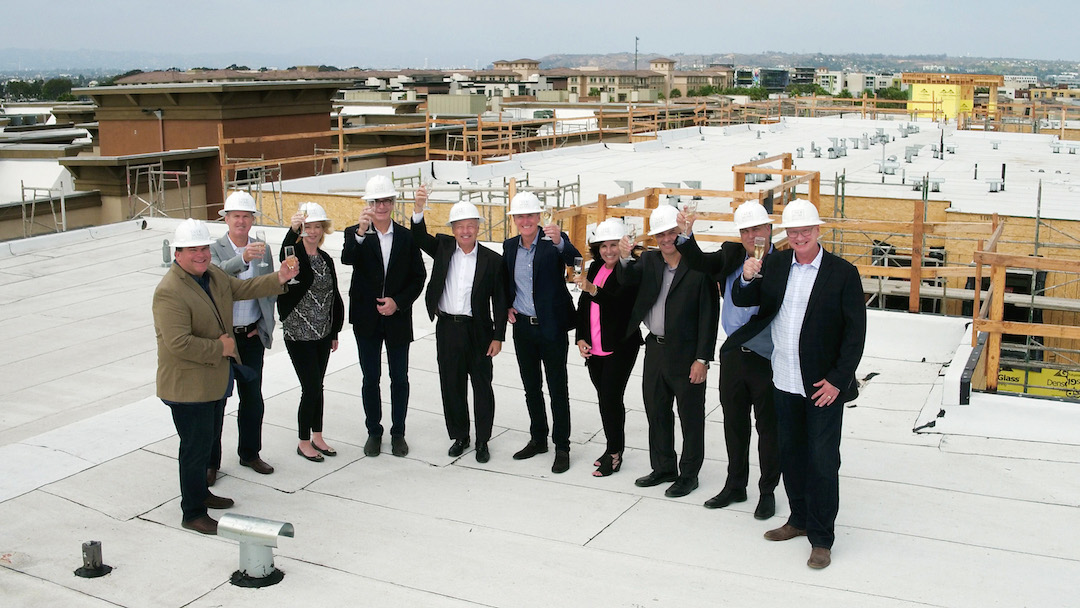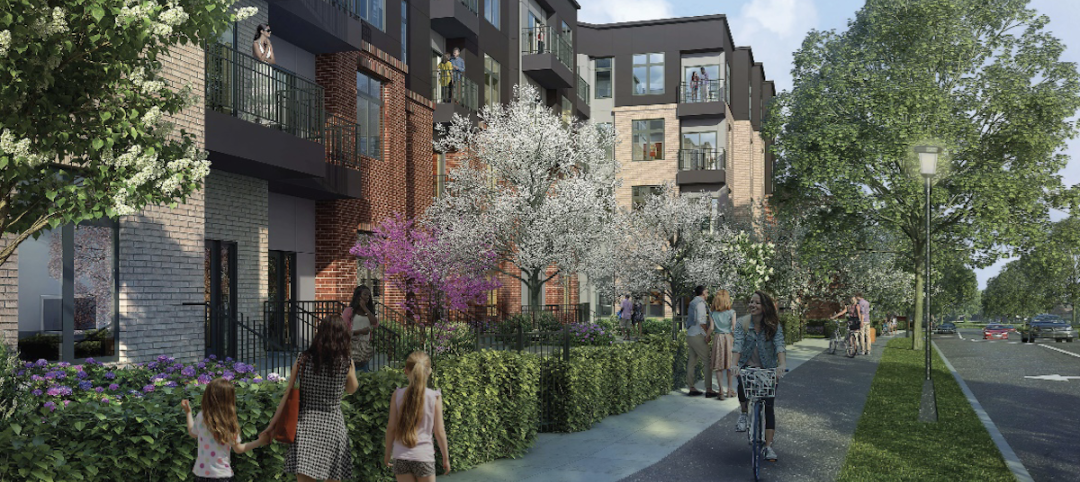Larry Webb, CEO of The New Home Company, starts each workday by digging into the latest batch of customer satisfaction surveys from recent buyers and tenants. “I’ve always felt that building communities comes with a responsibility to be there for our customers,” said Webb. “We want to raise the bar for everyone.”
A veteran of nearly four decades in real estate, Webb’s competitive drive was first evident in his passion for sports. He grew up in Buffalo, played soccer at the State University of New York at Cortland, and coached the Monument Mountain high school soccer team to the Massachusetts state title in 1974.
But a burning interest in urban issues compelled Webb to leave teaching to study city and regional planning at Harvard’s Graduate School of Design. After earning a master’s degree, he became a consultant at market research firms in Washington, D.C., and Denver. One of his clients hired him to help plan and design the first phase of Highlands Ranch, a 22,000-acre master-planned community in Denver.
See Also: A place of ‘voluntary and cheerful resort’
Webb relocated to Los Angeles in 1987 to sign on as Division President at Kaufman & Broad (now KB Home). A few years later, he became President of Greystone Homes in Orange County. Nineteen-ninety-five saw Webb joining U.K.-based John Laing Homes as CEO of U.S. operations. Over the next six years, he grew the business to eight divisions in seven states and completed a leveraged buyout of the unit.
Laing was acquired in 2006 by giant Middle East developer Emaar Properties for $1.05 billion—at the time, the largest private residential transaction in U.S. history. Webb left Laing in 2008, just as the market was plummeting. A year later, John Laing Homes filed for Chapter 11 bankruptcy protection; the company eventually liquidated its assets.
 Meridian is a collection of lock-and-leave coastal residences situated in Newport Beach, Calif. The 83 flats, townhomes, and penthouses feature floor plans ranging from 2,172 to 3,833 sf of living space with up to three bedrooms and 3½ baths. Photo: Eric Figge Photography.
Meridian is a collection of lock-and-leave coastal residences situated in Newport Beach, Calif. The 83 flats, townhomes, and penthouses feature floor plans ranging from 2,172 to 3,833 sf of living space with up to three bedrooms and 3½ baths. Photo: Eric Figge Photography.
THE RIGHT TIME FOR A FRESH START
“I felt like the bottom of the market was the right time to start a company,” he said. “We had access to land, fewer competitors, and the ability to attract good people.”
He assembled a management team of industry veterans: COO Tom Redwitz, who previously led the Laing Luxury Homes division; CFO Wayne Stelmar, Webb’s long-time colleague; and Chief Investment Officer Joe Davis, a former leader at the Irvine Company, a developer of coastal properties. Each invested $15 million in the new venture.
Over the next 12 months, the fledgling company hired 30 people, established a fee-building relationship with the Irvine Company, and attracted three external investment groups. “It was a really opportune time because a lot of people were looking for work and land prices were depressed,” said Redwitz, a licensed architect who oversees the in-house design team and now serves as Chief Investment Officer.
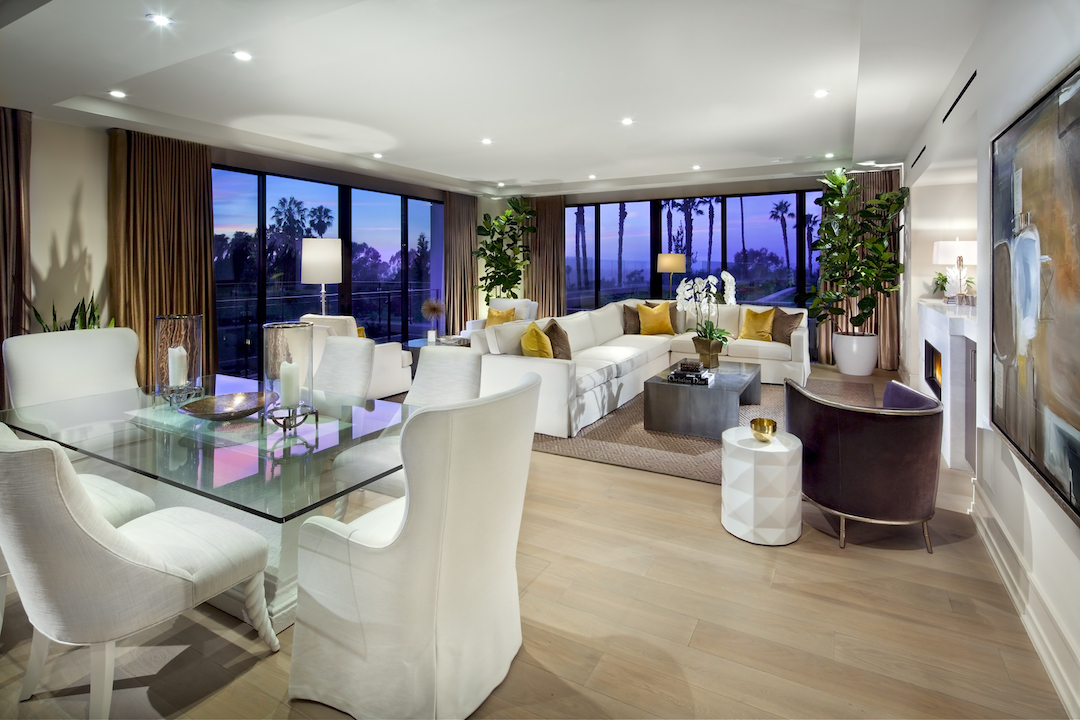 Meridian Living Space. Eric figge photography.
Meridian Living Space. Eric figge photography.
The first group of employees agreed to work for free for the first couple of months while the company found its footing. New Home’s initial focus was on building luxury homes in prime coastal locations across Southern California. It gradually extended its reach to Sacramento and the Bay Area, while expanding its expertise from single-family homes to attached homes and condominiums.
As the economy began to recover, the company’s senior managers recognized that continued geographic expansion would require quicker access to both debt and equity financing. On January 31, 2014, The New Home Company (NYSE: NWHM) debuted as a publicly traded company through an initial public offering that raised $86 million.
Webb, a critic of public homebuilders’ focus on short-term results, vowed to remain committed to the company’s core values. “That means we’ll never close a property that’s not ready because of a quarterly reporting deadline,” he said. “It’s just not who we are.”
LISTENING TO THE CONSUMER
Multifamily housing makes up 40% of current New Home projects, from low-density attached homes to mid-rise townhomes built on podium parking, to its signature multifamily properties, such as the Meridian, a 79-home luxury mid-rise townhouse community adjacent to the Fashion Island open-air retail center in Newport Beach.
New Home also specializes in master-planned communities, such as The Cannery, a farm-to-table community in Davis, Calif., that combines attached and detached residential options surrounded by parks and a working farm.
The company, which is headquartered in Aliso Viejo, Calif. (with offices in Walnut Creek, Roseville, and Agoura Hills, Calif., and Scottsdale, Ariz.), relies heavily on focus groups and market research to understand buyer preferences specific to each new community.
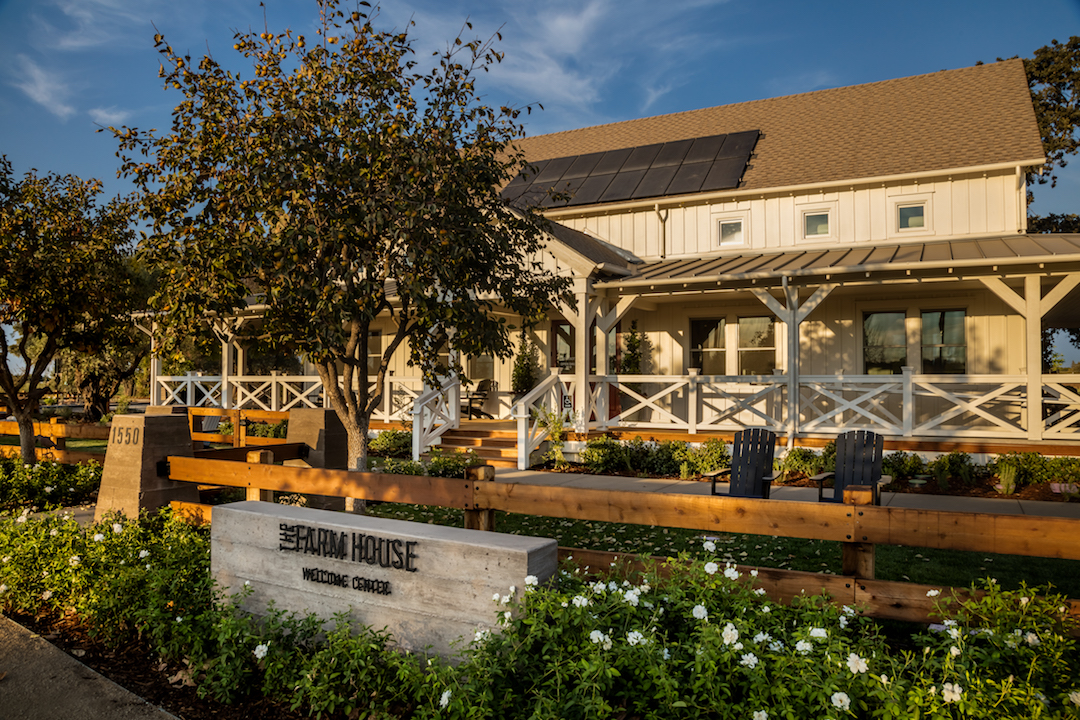 The 1,644-sf Farm House welcome center at The Cannery, The New Home Company’s farm-to-table planned community in Davis, Calif. A working farm on the property adds a unique element to the living environment, a mix of attached and detached residential options. Photo: Chris Mayer.
The 1,644-sf Farm House welcome center at The Cannery, The New Home Company’s farm-to-table planned community in Davis, Calif. A working farm on the property adds a unique element to the living environment, a mix of attached and detached residential options. Photo: Chris Mayer.
This feedback often influences practical planning and design decisions at New Home—from the way bathrooms are configured to the availability of closet space. “We’re not a company that takes plan number 105 off the shelf,” said Redwitz. New Home is consistently recognized in the Homebuyers’ Choice Awards, presented annually by consumer research firm Eliant.
In recent years, as prime coastal sites have become scarcer, New Home has broadened its portfolio to include more “attainably priced” housing. In 2016, its average sale price was $2 million; this year, it will be under $1 million.
That’s fine with chief designer Redwitz. “I’m as excited today designing a really cool 900-sf condominium as I was three years ago designing a $2 million unit,” he said. “Developing a creative design that is efficient and economical is a really stimulating puzzle to solve.”
The shift in price points helped New Home shorten construction cycles, control costs, turn inventory faster, and increase residential deliveries by 36% in 2017 compared to 2016. Total revenues were up 8% year over year—$751.2 million in 2017, vs. $694.5 in 2016. But New Home’s average selling price has decreased by 19% due to the shift in the product mix.
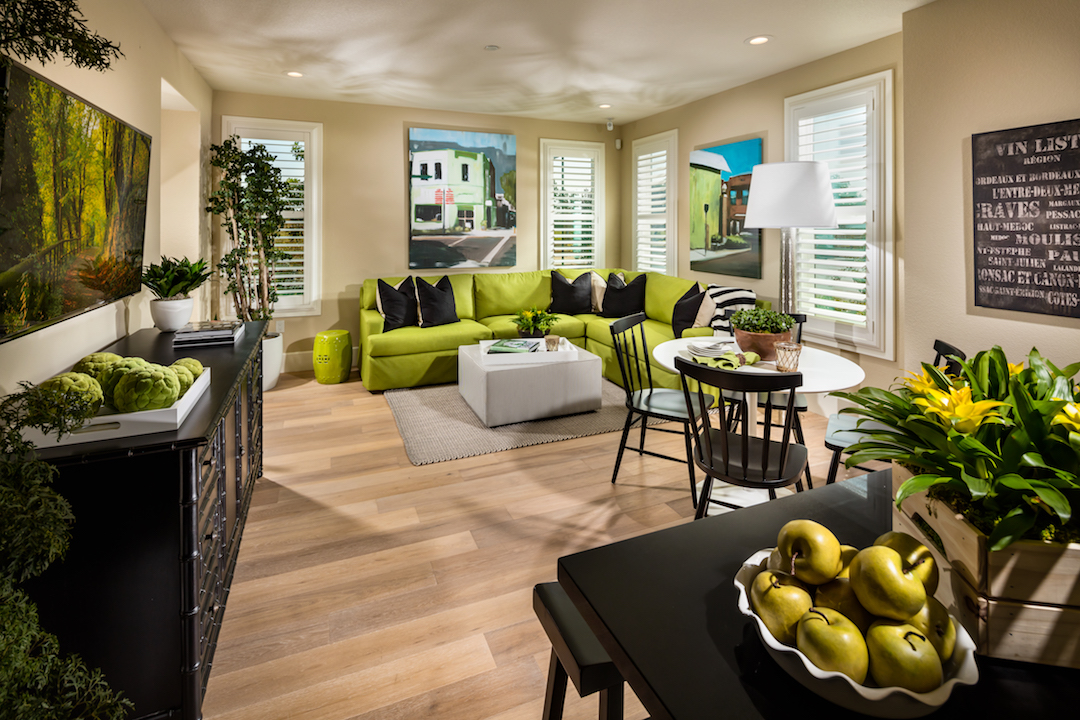 Photo: Chris Mayer.
Photo: Chris Mayer.
NURTURING A CULTURE OF CREATIVITY
Creativity and attention to detail are New Home’s design signatures. Its Cobalt at Esencia duplex community in Rancho Mission Viejo, Calif., earned Best Multi-Family Housing Community honors in this year’s Gold Nugget Awards.
That emphasis on creativity carries over to the work environment the company has established for its 300-plus staff members. “I love seeing our people get promoted, take on more responsibility, and grow in our organization,” said Webb.
New Home also focuses on building a culture that attracts top talent—from Millennials to industry veterans like Leonard Miller, who joined the firm in early 2017 as Chief Operating Officer following the retirement of co-founder Joe Davis. Its unique employee benefits include student loan repayment assistance and a condensed workweek that ends each Friday at 3 p.m.
New Home’s employees are active in the community, supporting organizations such as Second Harvest Food Bank of Orange County and HomeAid, which builds and renovates shelters for the transitionally homeless. The company sponsors and runs an annual golf tournament that raises $300,000 a year for Interval House, which operates a crisis center for victims of domestic violence.
For Webb, The New Home Company, by its very name, champions change in an industry that is often resistant to change. “When we first named the company, I think a lot of people probably laughed at it,” he said. “But I don’t think they laugh anymore. I think they get it.”
Related Stories
Multifamily Housing | Apr 12, 2024
Habitat starts leasing Cassidy on Canal, a new luxury rental high-rise in Chicago
New 33-story Class A rental tower, designed by SCB, will offer 343 rental units.
MFPRO+ News | Apr 10, 2024
5 key design trends shaping tomorrow’s rental apartments
The multifamily landscape is ever-evolving as changing demographics, health concerns, and work patterns shape what tenants are looking for in their next home.
Mixed-Use | Apr 9, 2024
A surging master-planned community in Utah gets its own entertainment district
Since its construction began two decades ago, Daybreak, the 4,100-acre master-planned community in South Jordan, Utah, has been a catalyst and model for regional growth. The latest addition is a 200-acre mixed-use entertainment district that will serve as a walkable and bikeable neighborhood within the community, anchored by a minor-league baseball park and a cinema/entertainment complex.
Multifamily Housing | Apr 9, 2024
March reports record gains in multifamily rent growth in 20 months
Asking rents for multifamily units increased $8 during the month to $1,721; year-over-year growth grew 30 basis points to 0.9 percent—a normal seasonal growth pattern according to Yardi Matrix.
Industry Research | Apr 4, 2024
Expenses per multifamily unit reach $8,950 nationally
Overall expenses per multifamily unit rose to $8,950, a 7.1% increase year-over-year (YOY) as of January 2024, according to an examination of more than 20,000 properties analyzed by Yardi Matrix.
Affordable Housing | Apr 1, 2024
Biden Administration considers ways to influence local housing regulations
The Biden Administration is considering how to spur more affordable housing construction with strategies to influence reform of local housing regulations.
Affordable Housing | Apr 1, 2024
Chicago voters nix ‘mansion tax’ to fund efforts to reduce homelessness
Chicago voters in March rejected a proposed “mansion tax” that would have funded efforts to reduce homelessness in the city.
Standards | Apr 1, 2024
New technical bulletin covers window opening control devices
A new technical bulletin clarifies the definition of a window opening control device (WOCD) to promote greater understanding of the role of WOCDs and provide an understanding of a WOCD’s function.
Adaptive Reuse | Mar 26, 2024
Adaptive Reuse Scorecard released to help developers assess project viability
Lamar Johnson Collaborative announced the debut of the firm’s Adaptive Reuse Scorecard, a proprietary methodology to quickly analyze the viability of converting buildings to other uses.
Green | Mar 25, 2024
Zero-carbon multifamily development designed for transactive energy
Living EmPower House, which is set to be the first zero-carbon, replicable, and equitable multifamily development designed for transactive energy, recently was awarded a $9 million Next EPIC Grant Construction Loan from the State of California.


